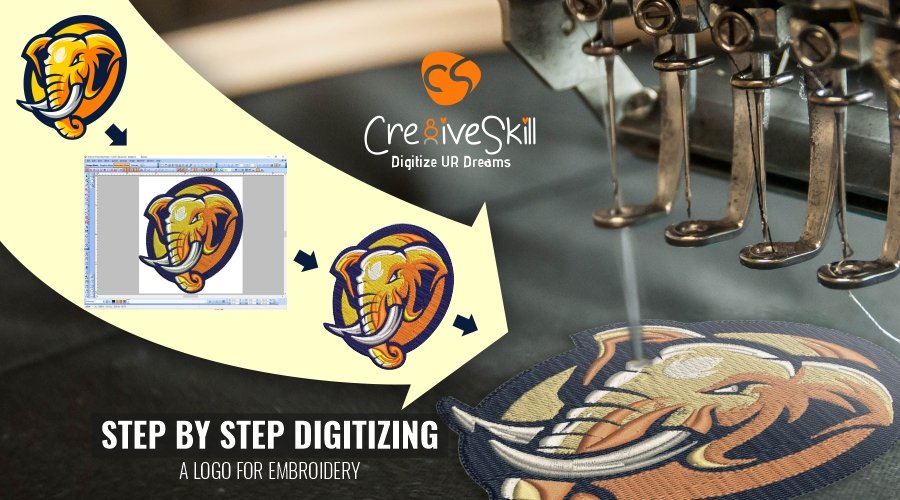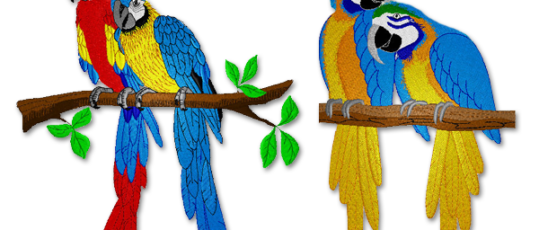Trustworthy Digitizing for Embroidery: Trusted by Specialists
Trustworthy Digitizing for Embroidery: Trusted by Specialists
Blog Article
Grasping the Needlework Digitizing Refine: Your Ultimate Guide
Embroidery digitizing is a thorough craft that calls for accuracy and know-how to translate elaborate designs into electronic formats for equipment needlework. As artisans get started on this trip to grasp the needlework digitizing process, a comprehensive understanding of the basics establishes the foundation for quality.

Understanding Embroidery Digitizing Fundamentals
Embroidery digitizing basics form the structure whereupon complex designs are translated into machine-readable layouts for precise sewing. This first action in the needlework digitizing procedure is vital for making sure that the last stitched product is a faithful representation of the original layout. Comprehending embroidery digitizing essentials involves grasping vital ideas such as stitch kinds, sew instructions, density, rug, and draw settlement.
Sew kinds play an important function in establishing the visual and textural result of the stitched layout. By choosing the proper stitch kind, whether it be satin, fill, or running stitch, digitizers can achieve the desired result and boost the overall quality of the needlework. In addition, sew direction affects the flow and measurement of the layout, while density determines the spacing and coverage of the stitches.
Moreover, padding sewing offers stability to the design by safeguarding the textile and stopping distortion during the embroidery procedure. Pull payment is one more essential factor to consider to combat the natural tendency of material to contract when sewn. Understanding these embroidery digitizing essentials is essential for developing professional-quality stitched items.
Picking the Right Digitizing Software Application
Picking the suitable digitizing software program is an essential decision that significantly affects the effectiveness and high quality of the needlework digitizing procedure. Digitizing for Embroidery. When selecting the best digitizing software, it is important to think about elements such as the complexity of designs you intend to create, the user-friendliness of the software program, the degree of client support supplied, and the compatibility with your needlework machine
There are numerous digitizing software program alternatives offered out there, varying from standard programs for beginners to sophisticated software for expert digitizers. Some preferred choices include Wilcom EmbroideryStudio, Hatch Embroidery Software, and PulseID. These software bundles use a vast array of tools and features to assist you produce detailed styles with ease.
Prior to deciding, it is recommended to check out the different software options with free tests or demos to identify which one finest fits your demands. Additionally, checking out reviews and seeking suggestions from skilled digitizers can provide valuable understandings into the strengths and weak points of each software (Digitizing for Embroidery). By meticulously assessing your requirements and contrasting the attributes of various digitizing software, you can make an informed selection that enhances your needlework digitizing process
Digitizing Tools and Strategies

Optimizing Layout Setup for Needlework
Understanding the complexities of style setups is basic in achieving ideal cause the needlework digitizing process, building upon the foundation laid by comprehending digitizing devices and strategies. When optimizing style settings for embroidery, it is necessary to consider elements such as stitch type, density, underlay, draw compensation, and registration. Stitch kind option influences the total feel and look of the style, with options like satin, fill, and running stitches offering various structures and impacts. Density describes the spacing and density of stitches, impacting the layout's insurance coverage and toughness. Appropriate underlay sewing gives security and avoids fabric distortion, specifically for complex styles or on stretchy materials. Draw payment adjusts for textile stretch during stitching, making certain accurate layout duplication. Registration settings straighten different aspects of the style properly, preserving total design honesty. By fine-tuning these style settings, embroiderers can improve the quality and accuracy of their embroidered productions.

Troubleshooting Common Digitizing Issues
When coming across common digitizing issues during the embroidery procedure, it is important to comprehend the origin causes and carry out effective options quickly. One common issue is stitch thickness issues, where stitches might be also thick, causing web the fabric to tighten, or as well thin, resulting in gaps in the style. Adjusting the stitch thickness settings in the digitizing software application can aid solve this concern.
An additional constant challenge is thread breaks throughout the embroidery procedure. This can take place because of various factors such as inaccurate stress settings, boring needles, or using low-grade string. Making certain appropriate maintenance of the needlework maker, including regular needle changes and tension adjustments, can decrease the incident of thread breaks.
Furthermore, design registration mistakes can cause misaligned components within the needlework design. Examining the design positioning in the digitizing software and making essential changes prior to stitching can help in avoiding this issue. By resolving these common digitizing problems quickly and properly, you can make certain a smoother needlework process and top notch ended up items.
Conclusion
Finally, understanding the needlework digitizing process calls for a solid understanding of the fundamentals, the best selection of software program, and understanding of tools and techniques. Maximizing style settings and troubleshooting common digitizing problems are crucial actions in ensuring high-grade embroidery outcomes. By following these steps diligently, one can accomplish accuracy and efficiency in the digitizing procedure.
Report this page